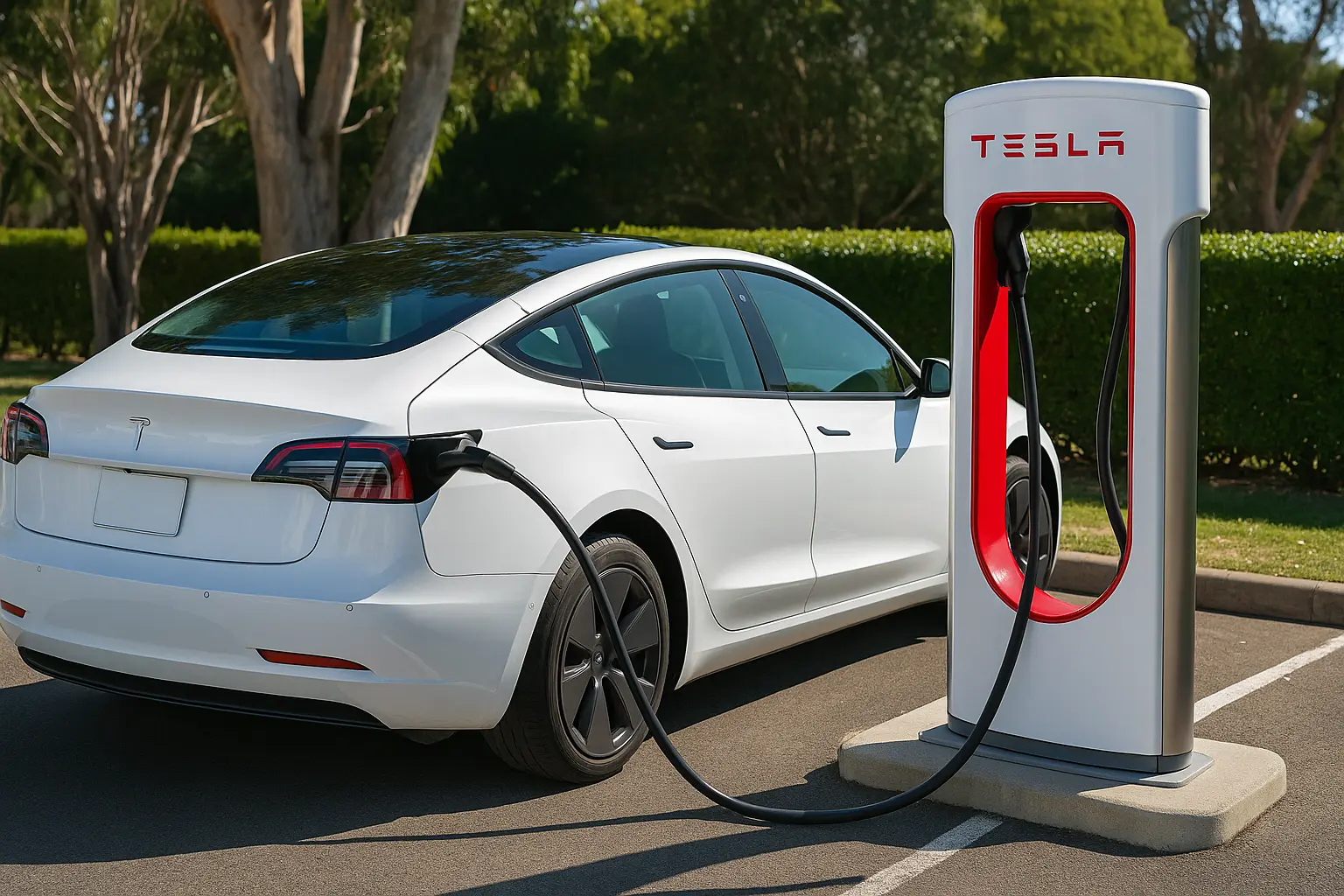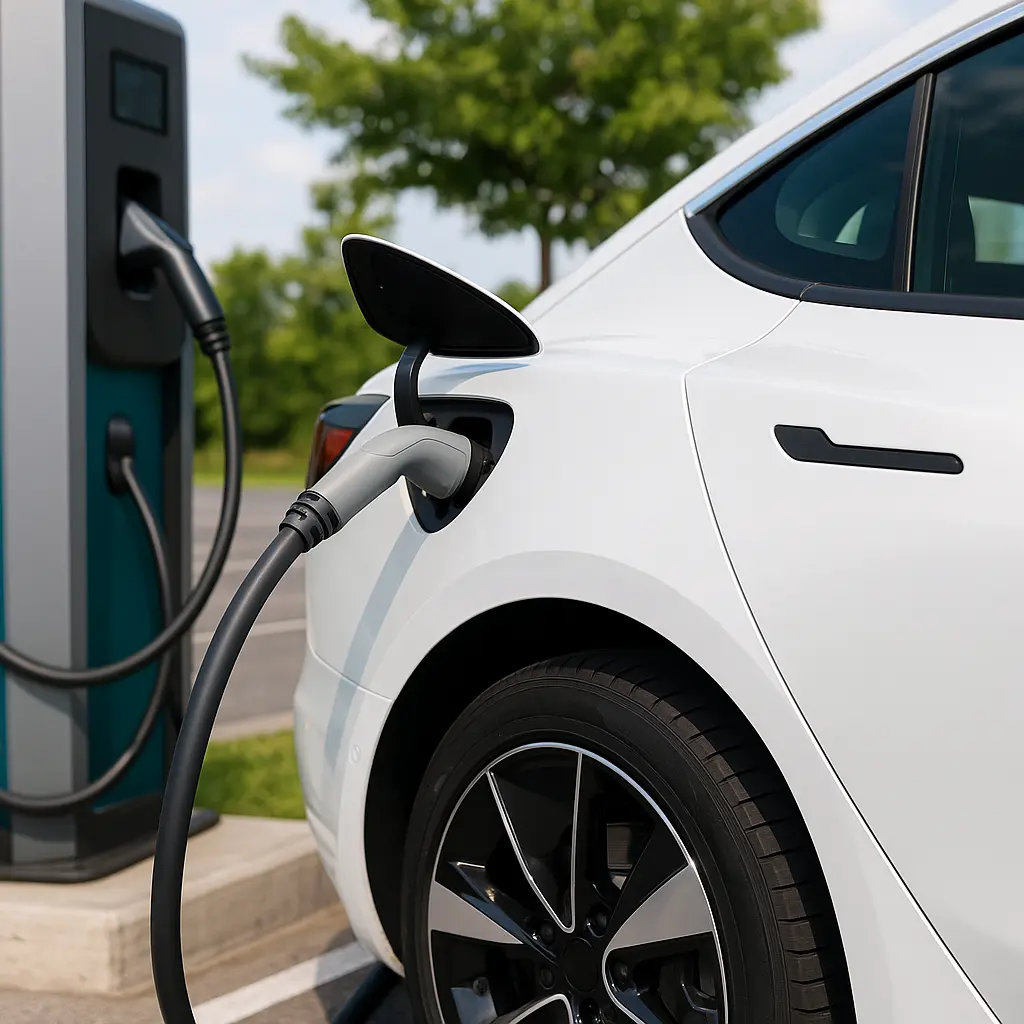How Fast Can You Charge an EV in Australia? 2025 Charging Speeds

Introduction: Charging into the Future
The question “how long does it take to charge an EV?” is as important today as “how many litres to fill a tank?” was ten years ago. In 2025, with electric vehicles (EVs) becoming mainstream in Australia, understanding charging times is essential to owning and operating an EV confidently.
Whether you’re planning a long road trip or just want to know how long your car will be out of action during a top-up, this guide breaks down EV charging speeds in 2025 across various charger types, EV models, and locations in Australia.
Section 1: EV Charging Basics
What Determines EV Charging Time?
EV charging speed depends on:
- Battery size (kWh)
- Current battery state-of-charge (SoC)
- Charging station type and power output
- Maximum onboard charger capacity of the vehicle
- Temperature conditions and battery management system (BMS)
Charging Speeds by Type (2025 Standards)
| Charger Type | Power Output | Approx. Charging Time (0–80%) |
|---|---|---|
| Level 1 – Household | 2.4kW | 24–36 hours |
| Level 2 – Wall Box | 7.4–22kW | 4–10 hours |
| DC Fast Charger | 50–100kW | 60–90 minutes |
| Ultra-Rapid DC | 150–350kW+ | 15–45 minutes |
Section 2: Types of EV Chargers Available in Australia (2025)
1. Home Charging (AC)
Most EV owners charge overnight using Level 1 or Level 2 AC chargers.
- Level 1: Slow, basic, and comes with most EVs.
- Level 2: Wall-mounted chargers; faster, ideal for daily use.
2. Public AC Charging
Ideal for shopping centre parking, office buildings, and hotels. Typically offer 7.4kW to 22kW.
3. DC Fast Charging
Found in service stations and along highways. These 50–100kW chargers are the workhorses of public EV charging.
4. Ultra-Rapid DC Charging
2025 has seen a rise in ultra-fast stations (150–350kW), especially from Chargefox, Evie Networks, and Tesla Superchargers (V3+).
Section 3: Charging Networks in Australia (2025)
🔌 Chargefox
- Largest network in Australia
- 100+ ultra-rapid stations
- Supports CCS2 and CHAdeMO
⚡ Evie Networks
- Focus on high-power 350kW chargers
- Solar-powered stations in regional areas
🚘 Tesla Superchargers
- Exclusive to Tesla (some now open to other brands)
- V3 and newer offer up to 250kW
- Fastest real-world charging in Australia
🅿️ NRMA / Ampol / BP Pulse
- Expanding fast-charging footprints
- Many now integrated into EV route planning apps
Section 4: Charging Times by Popular EV Models (2025)
| EV Model | Battery Size | Max DC Charging | 0–80% Fast Charge Time |
|---|---|---|---|
| Tesla Model Y | 60–81kWh | 250kW | 20–30 min |
| BYD Seal | 61–82kWh | 150kW | 25–35 min |
| Hyundai IONIQ 5 | 77.4kWh | 350kW | 18–25 min |
| Kia EV6 | 77.4kWh | 350kW | 18–24 min |
| Polestar 2 | 69–82kWh | 205kW | 25–30 min |
| MG4 EV | 51–77kWh | 135kW | 30–40 min |
| Nissan Leaf (2025 update) | 39–59kWh | 50kW | 45–60 min |
Section 5: Home vs Public Charging – Which Should You Rely On?
🏡 Home Charging Pros
- Convenience
- Lower electricity rates overnight
- Ideal for routine top-ups
🚗 Public Charging Pros
- High-speed for long-distance travel
- Essential for apartment dwellers
- Wide network support for road trips
🔁 Blended Strategy is Best
In 2025, the average Aussie EV owner uses home charging 70–80% of the time, and public fast charging for longer or unexpected trips.
Section 6: Charging Costs in 2025
| Charging Type | Avg. Cost/kWh | Cost to Charge 60kWh EV (0–100%) |
|---|---|---|
| Home – Off-peak | $0.25 | ~$15.00 |
| Home – Peak | $0.40 | ~$24.00 |
| Public DC Fast | $0.45–$0.60 | ~$27–$36 |
| Ultra-Rapid DC | $0.65–$0.85 | ~$39–$51 |
Section 7: Factors That Affect Real-World Charging Time
- Battery State of Charge (SOC) – EVs slow charging rate above 80%.
- Temperature – Cold weather slows battery and charging response.
- Charger Load Sharing – Shared chargers may reduce effective output.
- Vehicle Battery Management Software – Some vehicles handle power more efficiently than others.
- Cable Quality & Connector Type – CCS2 is now the Australian standard; compatibility matters.
Section 8: What’s New in 2025? EV Charging Innovations
🔋 Solid-State Battery EVs
Emerging models with solid-state batteries support even faster, safer charging.
📶 Plug & Charge Technology
Instant authentication and billing, no app/card required.
⚡ V2G (Vehicle to Grid) Support
Some EVs now allow bi-directional charging, helping households reduce grid dependence.
🌱 Solar-Integrated Charging
Home solar EV charging stations now widespread, especially in suburban Australia.
Section 9: EV Charging Time Myths – Busted!
- ❌ Myth: All fast chargers charge at the same speed
✅ Fact: Charger output and your EV’s max input both matter. - ❌ Myth: Charging to 100% is always better
✅ Fact: Most EVs recommend charging to 80–90% for battery health. - ❌ Myth: Charging is expensive
✅ Fact: Home off-peak charging is far cheaper than petrol. - ❌ Myth: You always need to fully charge
✅ Fact: Most daily commutes use less than 20% of battery.
Section 10: Planning Your Day Around EV Charging
For Daily Drivers
Charge overnight at home or during work hours if chargers are available.
For Weekend Warriors
Plan around charging stops – use apps like PlugShare or A Better Route Planner.
For Long Distance
Use ultra-rapid stations on highways. New networks offer real-time charger availability and reservation.
Section 11: Future Outlook – EV Charging in 2030 and Beyond
By 2030:
- All new homes may require EV-ready garages.
- Solar + EV + home battery integration will be standard.
- Most regional highways will have 350kW chargers every 50–100 km.
- Battery-swapping tech may emerge in fleet and taxi sectors.
Conclusion: Time Is Power
Charging an EV in Australia in 2025 is fast, affordable, and increasingly convenient. Whether you charge at home or on the road, your experience will depend on your vehicle, charger type, and daily habits. With infrastructure booming and technology evolving rapidly, charging speeds will only improve.
Leave a comment
Your email address will not be published. Required fields are marked *




















